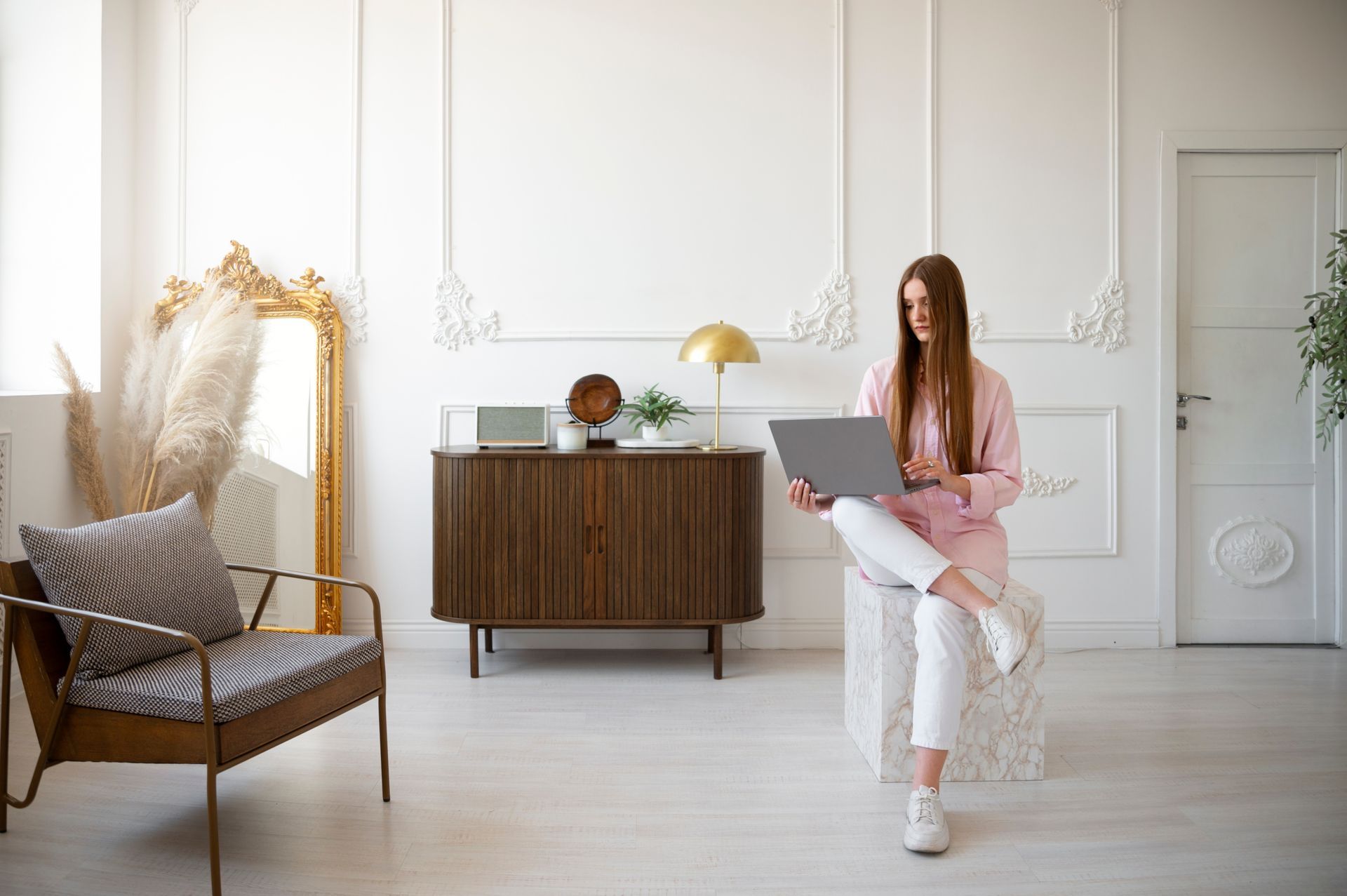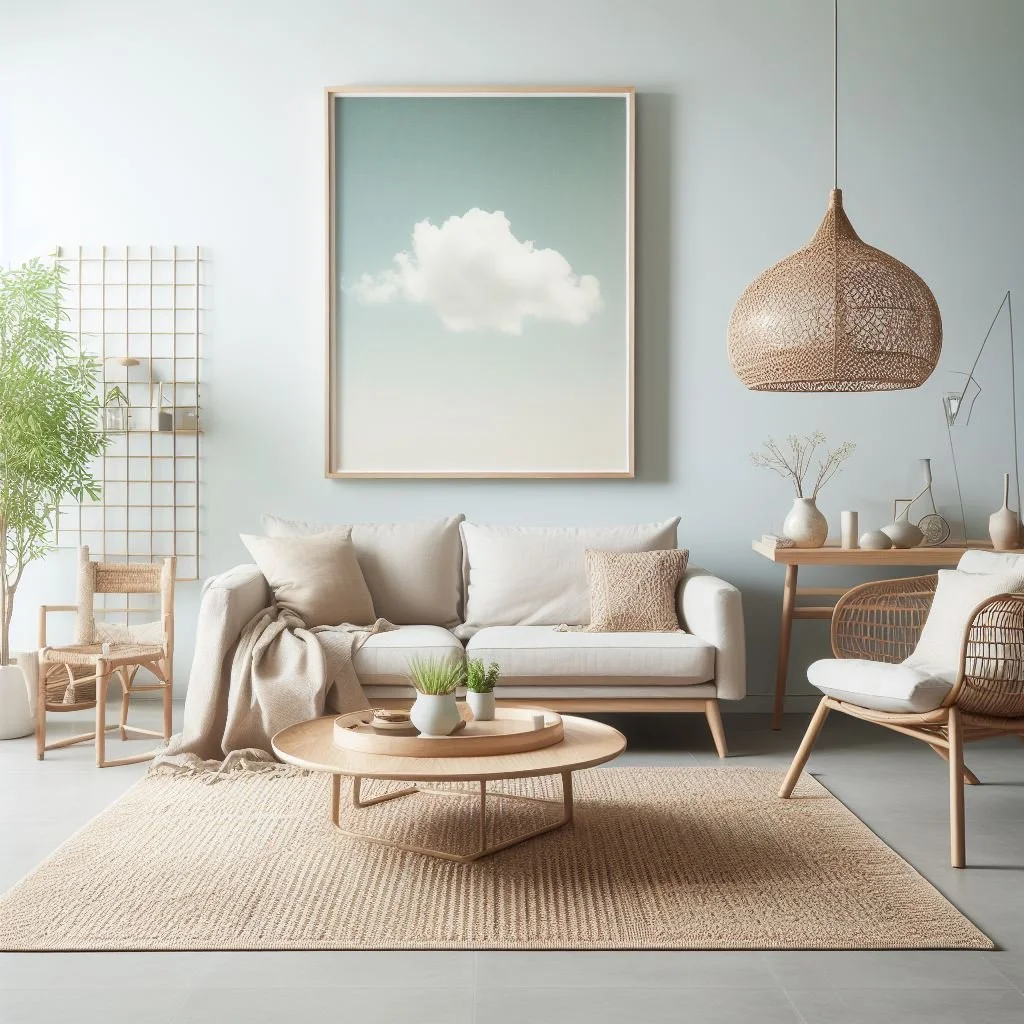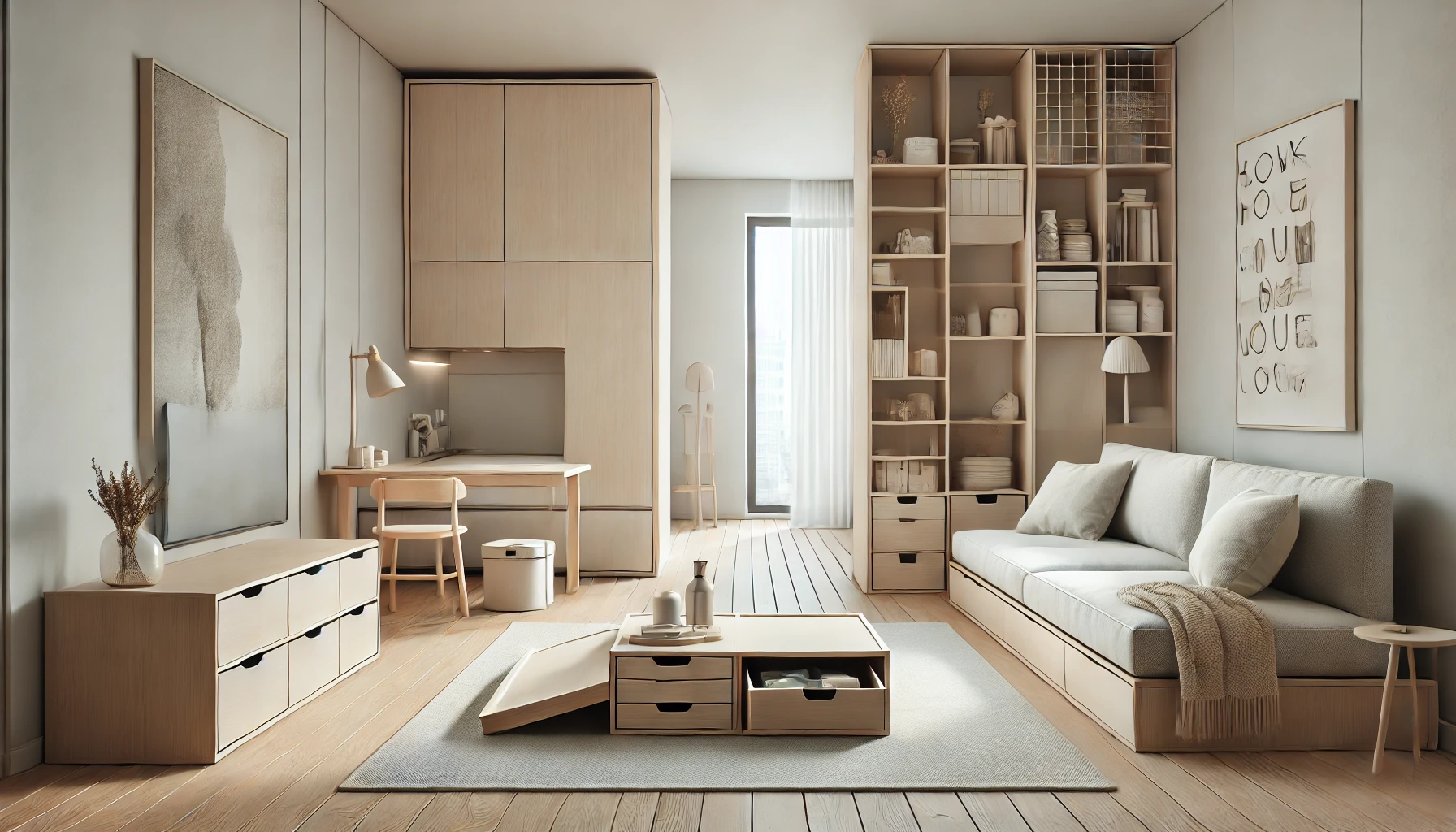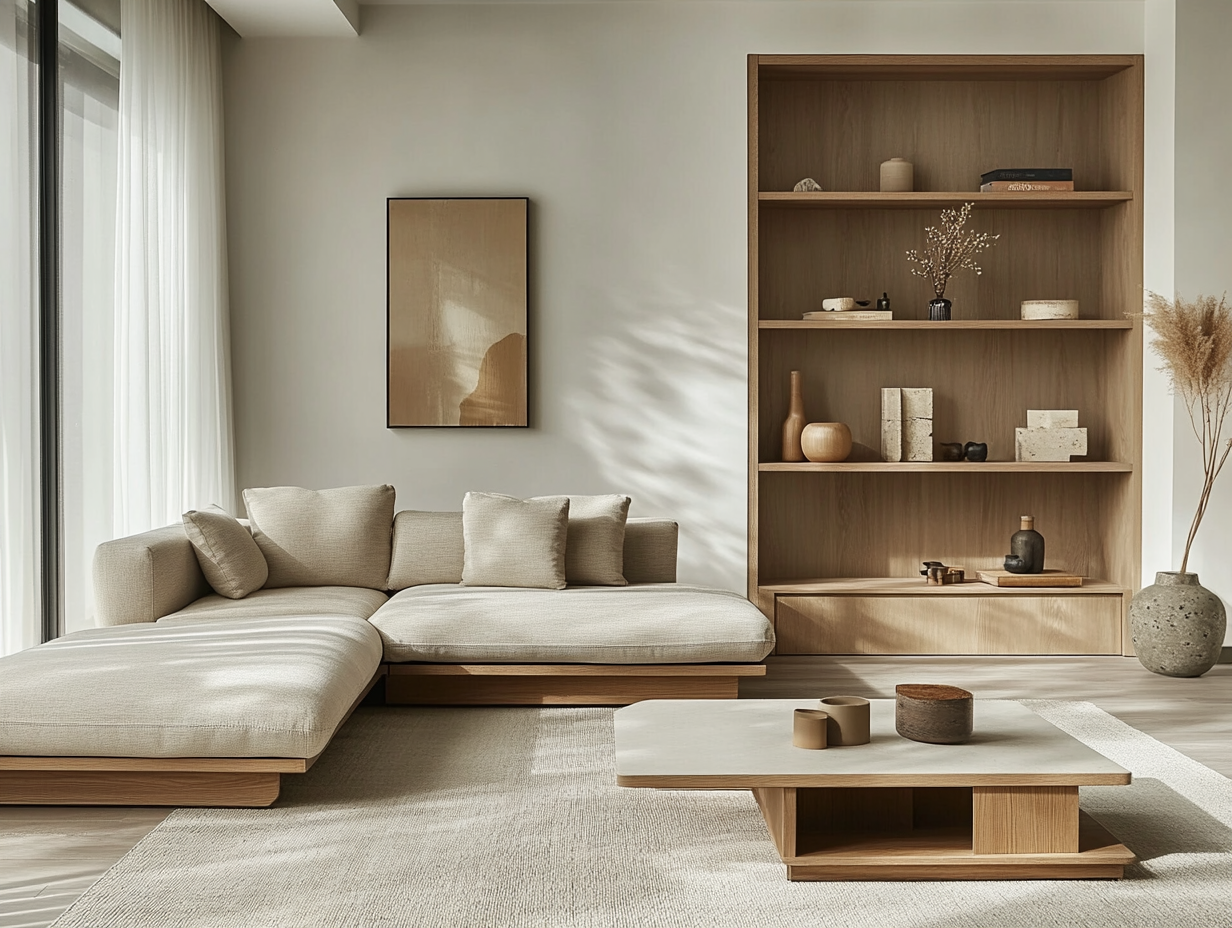The Aesthetics of Minimalism: How Interior Design Can Transform Small Spaces

Embracing Simplicity in Design
The world of interior design is continuously evolving, drawing inspiration from various styles and cultural trends. Among these, the aesthetics of minimalism have emerged as a powerful force, especially in smaller spaces. This transformation emphasizes clean lines, functional spaces, and the beauty of simplicity, making it increasingly popular in urban settings where space is often at a premium.
Key Principles of Minimalism
- Less is More: This pivotal principle encourages homeowners to pare down their belongings. By focusing on fewer furnishings, they create a space that not only feels more open but also reduces the time and energy spent on maintenance. For instance, opting for a single statement piece—a striking coffee table or an elegant armchair—can anchor a room without overwhelming it.
- Functional Design: In minimalist design, every element must serve a specific purpose. This means that furniture should not only be aesthetically pleasing but also practical. Consider multifunctional pieces like a sofa that converts into a bed or an extendable dining table that accommodates both intimate dinners and larger gatherings. Such furniture helps to ensure that even compact living areas remain efficient while catering to various needs.
- Neutral Color Palettes: Utilizing soft, calming tones—such as whites, grays, and beiges—creates an illusion of spaciousness. These hues reflect light, making a room feel airy. Adding subtle pops of color through accessories, like throw pillows or artwork, can offer visual interest without cluttering the space. For example, a vibrant piece of abstract art can become a focal point in an otherwise muted living room.
Implementing these principles can significantly enhance the functionality and aesthetic appeal of any small area. The right approach can transform an overcrowded apartment into a tranquil haven. Homeowners and designers alike are discovering how minimalism offers not just visual appeal but also an improved quality of life. By fostering a mindful approach to home decor, individuals often find themselves more organized and less distracted in their living spaces.
Benefits of Minimalism in Small Spaces
- Enhanced Space Utilization: In smaller apartments, maximizing every square foot is essential. Minimalism encourages efficient layouts that prioritize movement and accessibility, resulting in a more organized environment. For example, open shelving can be both decorative and functional, allowing for easy access to everyday items while maintaining a visually appealing space.
- Increased Natural Light: With fewer obstacles, natural light can flow freely, making spaces feel larger and more inviting. Large windows and strategic placement of mirrors can amplify this effect, helping to create a bright and airy atmosphere. Residents living in bustling cities, such as New York or San Francisco, often rely on these techniques to combat the sometimes confining nature of urban living.
- Reduced Stress: A clean and organized home can lead to a more calming and focused mindset. Studies suggest that a clutter-free environment can reduce anxiety levels, making it easier for individuals to unwind and concentrate on important tasks. By adopting a minimalist approach, many people find that their homes become a refuge from the chaos of everyday life.
As we delve deeper, we will explore how the principles of minimalism can be creatively applied to small living areas, ultimately redefining their potential. Embracing simplicity in design is not just about aesthetics; it’s about cultivating a lifestyle that prioritizes clarity, purpose, and peace. Whether you’re reimagining a cramped studio apartment or refreshing a small bedroom, minimalism offers a transformative approach that can lead to a more fulfilling living experience.
DISCOVER MORE: Click here to uncover essential strategies
Transforming Small Spaces Through Thoughtful Design
Small spaces often present unique challenges, but when approached with the lens of minimalism, these challenges can become opportunities for creativity and innovation. The aesthetics of minimalism focuses on maximizing functionality while maintaining visual appeal, making it an ideal choice for compact living environments. By understanding and implementing essential minimalist principles, homeowners can redefine their small spaces and create an atmosphere that feels both spacious and serene.

Creating a Cohesive Space
One hallmark of minimalism is the emphasis on cohesive design. This means selecting a color palette, furniture, and decor that all create a seamless flow throughout the space. A well-planned cohesive aesthetic makes a room feel larger than its actual size, allowing the eye to move freely without distractions. Here are key strategies to foster this cohesiveness:
- Select a Consistent Color Scheme: Choosing a limited color palette—often composed of neutrals—serves to unify the visual landscape. Shades of white, gray, and beige work to enhance natural light, giving the illusion of increased space.
- Streamlined Furniture Choices: Minimalist furniture design typically features clean lines and geometric shapes that blend effortlessly with their surroundings. When selecting furniture, aim for pieces that have a unified style. For instance, pairing a sleek sofa with a matching coffee table and minimalist shelving creates a harmonious environment.
- Use of Patterns and Textures: While minimalism often favors simplicity, incorporating subtle patterns or textures can add depth without creating chaos. For example, a softly patterned rug can anchor a space while maintaining a serene ambiance.
Another critical aspect of minimalist interior design is the concept of negative space. This refers to the areas that remain intentionally empty, allowing for breathing room within a design scheme. By consciously leaving areas open, small spaces can feel less cramped and provide a welcome respite from visual noise. This not only enhances the atmosphere but also makes daily living more enjoyable.
Personalizing Minimalism
Minimalism doesn’t mean stripping away all personality; rather, it encourages homeowners to choose pieces that genuinely resonate with them. A minimalist approach can include carefully selected personal items that reflect individual style and history. Thoughtful curation of decor ensures that every item has meaning, thus preventing clutter from overtaking the space. Consider the following tips to personalize your minimalist design:
- Incorporate Meaningful Art: A few well-placed artworks can serve as powerful focal points. Opt for pieces that evoke emotion or represent personal milestones while resonating with the overall color scheme.
- Maintain Functionality: Choose decorative elements that double as functional pieces, such as stylish storage solutions or multi-use furniture, blending aesthetics with practicality.
- Thoughtful Accessories: Instead of overloading shelves and surfaces, select a few standout accessories that add character, such as an artisanal vase or sculptural objects, to elevate the design.
With these strategies, the aesthetics of minimalism can transform small spaces into havens of tranquility, proving that less truly can be more. As we continue to explore minimalism in interior design, it becomes evident that embracing simplicity can lead not only to a visually pleasing environment but also to a more harmonious lifestyle.
| Advantage | Description |
|---|---|
| Enhanced Functionality | Minimalism encourages smart space usage by prioritizing essential furniture, fostering smoother daily activities in small spaces. |
| Visual Clarity | With a focus on minimal decor, small living areas achieve a clean and organized look, making the space appear larger and more inviting. |
| Increased Serenity | Fewer distractions lead to a calming atmosphere, ideal for relaxation and reflection in the home. |
| Versatile Design | Minimalist design supports varied style elements, seamlessly blending function with aesthetic appeal. |
By adopting the principles of minimalism, individuals can leverage these advantages to not only enhance their living environments but also to contribute to a more functional and tranquil lifestyle. The aesthetic choice to simplify decor can significantly transform how small spaces are perceived and utilized, fostering a refreshing ambiance that appeals to many. Dive deeper into the relationship between minimalism and space optimization, and uncover innovative designs that redefine modern living.
DISCOVER MORE: Click here to learn how minimalism can enhance your daily routine
Functional Flexibility: Embracing Multi-Use Spaces
In the world of minimalism, functionality reigns supreme, especially in small spaces where every square foot counts. Embracing a flexible approach to design allows homeowners to maximize their utility without compromising on aesthetics. Transforming small areas into versatile spaces can redefine daily living while adhering to minimalist principles. This functional flexibility invites a thoughtful investigation into the latest trends and ideas for making the most out of compact living.
Multi-Functional Furniture Options
One of the cornerstones of minimalist interior design is the use of multi-functional furniture. When selecting furnishings for small spaces, consider pieces that serve dual purposes or can be easily reconfigured for various needs. Here are some innovative options:
- Convertible Sofas: A sofa bed or a daybed not only provides seating during the day but also offers a comfortable sleeping solution for guests at night. Look for sleek designs that blend seamlessly with your decor while providing functionality.
- Nesting Tables: These space-saving tables can be tucked away when not in use and pulled out as needed, offering a stylish surface for snacks or drinks while entertaining. Their minimalist silhouette keeps your space uncluttered.
- Storage Ottomans: Opt for stylish ottomans that double as storage solutions. They can be used for extra seating, serve as a footrest, or even be used as a stylish coffee table while keeping your essentials hidden away.
These multi-use pieces not only enhance the functionality of the space, but they also contribute to a minimalist aesthetic by reducing the number of individual items cluttering the room.
Smart Space Planning
A minimalist approach to interior design also requires strategic space planning to ensure that every inch is utilized effectively. Cleverly planned layouts can significantly influence how spacious a smaller area feels. Consider these space-planning techniques:
- Defined Zones: Even in open-concept designs, creating defined zones can help to structure the flow of activities within a small space. Use area rugs or furniture arrangements to differentiate between living, dining, and working areas.
- Vertical Storage Solutions: Utilizing vertical space is essential in small interiors. Wall-mounted shelves, tall cabinets, and hanging organizers can draw the eye upward, making the room feel taller and more expansive.
- Transparent Elements: Incorporating glass or acrylic furniture, such as a glass coffee table or clear dining chairs, can create an illusion of openness. The transparency allows light to travel freely throughout the space, contributing to a more airy feel.
The integration of these strategies fosters a balanced and functional environment that embodies the minimalist ethos while also providing an adaptive living space.
Natural Elements and Light
To further enhance the aesthetics of minimalism in small spaces, incorporating natural elements and light can profoundly impact the overall ambiance. The interplay of light and organic materials can create a tranquil atmosphere that connects interior spaces to nature. Here’s how to incorporate these essential elements:
- Maximize Natural Light: Utilize sheer window treatments to allow natural light to permeate your spaces. Natural light not only creates a warm and inviting atmosphere but also makes even the smallest rooms feel larger.
- Incorporate Plants: Adding greenery can enliven a minimalist space without overwhelming it. Choose low-maintenance plants that don’t require much space, such as succulents or small ferns, to bring in a touch of nature.
- Natural Materials: Using materials like wood, stone, and cotton can introduce warmth and texture to a minimalist design. A reclaimed wood coffee table or a stone planter can offer visual interest while maintaining simplicity.
By thoughtfully integrating these elements, homeowners can enhance their small spaces, creating not only a visually appealing environment but also nurturing a holistic living experience that aligns with minimalist values.
DISCOVER MORE: Click here to learn about minimalism in design
Embracing Minimalism: A New Perspective on Small Spaces
In conclusion, the aesthetics of minimalism provide an unrivaled opportunity to transform small spaces into functional, serene, and visually appealing environments. By prioritizing functional flexibility, homeowners can utilize innovative furniture solutions and smart space planning to truly maximize every inch. The incorporation of multi-functional furniture, such as convertible sofas and nesting tables, not only streamlines the design but also underscores the elegance of minimalism by eliminating clutter.
Moreover, the strategic use of natural elements and light can significantly enhance the overall atmosphere of a space. By allowing natural light to flood interiors and integrating nature through plants and organic materials, homeowners can create a harmonious connection to the outdoors, fostering a soothing ambiance that complements minimalist living.
Ultimately, embracing the principles of minimalism does not mean sacrificing style or comfort; rather, it invites a mindful approach to design that celebrates simplicity and versatility. As urban living becomes increasingly common, the aesthetic of minimalism serves as a powerful antidote to the chaos of modern life, encouraging us to focus on what truly matters—function, clarity, and beauty. Explore minimalism in your own small space, and unlock the potential to enhance your daily living experience.


